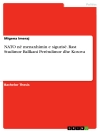In response to pirate attacks in the Western Indian Ocean, countries worldwide have increasingly authorized the deployment of armed guards from private military and security companies (PMSCs) on merchant ships. This widespread trend contradicts states’ commitment to retain a monopoly on violence and discourage the presence of arms on civilian vessels. This book conceptualizes the extensive use of PMSCs as a form of institutional isomorphism, combining the functionalist, ideational, political and organizational arguments used to account for the privatization of security on land into a synthetic explanation of the commercialization of vessel protection.
Tabla de materias
Chapter 1. Introduction: protecting merchant vessels from pirates.- Chapter 2. Piracy and counter-piracy in the Twenty-first century.- Chapter 3. From divergence to isomorphism in vessel protection policy: a theoretical framework.- Chapter 4. Privateers versus pirates? The United Kingdom case.- Chapter 5. Vessel protection in the Netherlands: a belated commercialisation?.- Chapter 6. From hybrid to commercial vessel protection: the Italian case.- Chapter 7. Vessel protection in other European countries.- Chapter 8. Open registries and vessel protection: Panama, Liberia and the Marshall Islands.- Chapter 9. Isomorphic convergence in vessel protection.- Chapter 10. Conclusion: vessel protection between private and maritime security studies.
Sobre el autor
Eugenio Cusumano is Assistant Professor of International Relations at the University of Leiden, the Netherlands. He wrote extensively on non-state actors’ involvement in crisis management on journals like Security Dialogue and the Journal of Strategic Studies and edited volumes published by Palgrave, Oxford and Stanford University Press.
Stefano Ruzza is Assistant Professor of Political Science at the University of Turin, Italy. He is also a Head of Program at T.wai – Torino World Affairs Institute, lectures in Italian Army advanced educational programmes, and is responsible for the Italian translation of the SIPRI Yearbook Summary.












